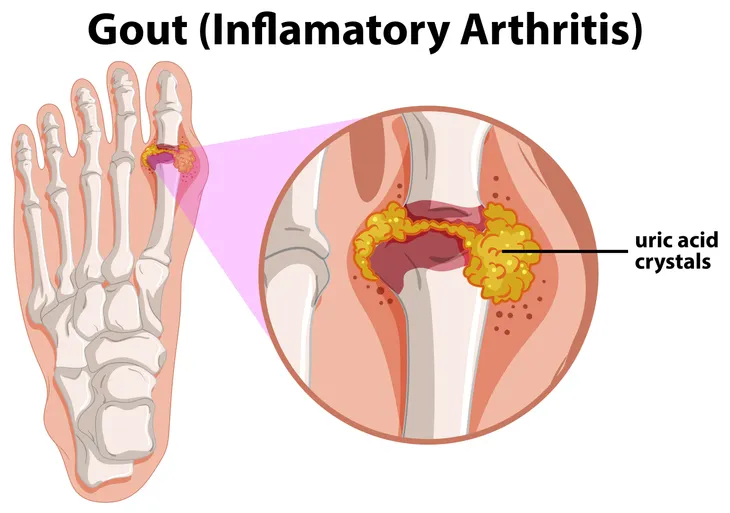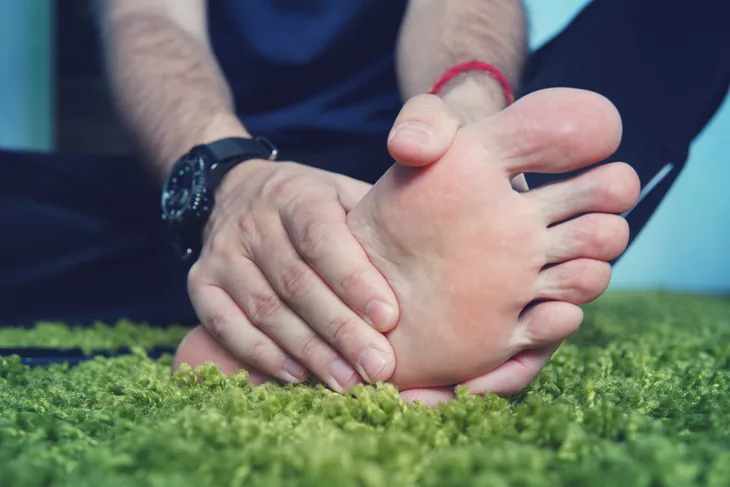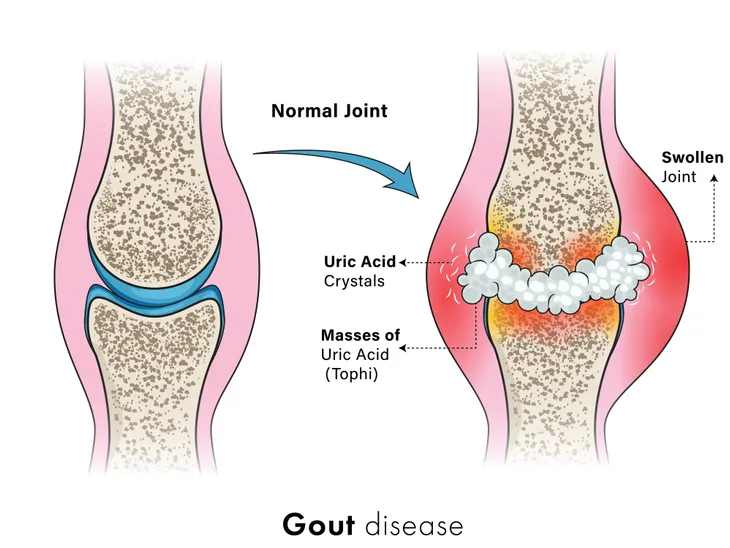Gout is a chronic, painful condition that affects over 9 million people in the US. Thankfully, the medical community has made great strides in the understanding and treatment of this terrible affliction. Despite this, the demand for gout treatment therapies remains well below the expected levels.
This conundrum can possibly be explained by misinformation and/or resistance to making a serious commitment to lifestyle changes. Whatever the case may be, we thought it might be helpful to provide qualified answers to some of your most important questions about gout.
Gout Is an Ancient “Disease for the Rich”, Why Are We Seeing Cases Go Up Around the World Today?
While it is true that cases of gout were usually observed in middle-aged men of wealthy families centuries ago, the underlying causes are still relevant today. Today, many countries around the world are struggling with obesity and high blood pressure issues which are leading risk factors for gout.
In addition, people are living longer than in previous centuries, so cases of gout in older women are on the rise. Even if you never had issues with hyperuricemia in your earlier years, uric acid can still build-up to the point of causing gout flares.
Is Gout Really a Type of Arthritis?
Not only is gout a type of arthritis, but it is also the most common form of inflammatory arthritis affecting people today. Many people can confuse a gout flare-up for a really bad sprain, even if they have no recollection of an injury.
In spite of the distinctly sharp pain and debilitation caused by gout, many people choose to “tough it out” with over-the-counter treatments. As a result, many gout sufferers don’t even know the true source of their painful discomfort.
What Are Some of the Typical Symptoms of Gout?
One of the telltale signs of a gout attack is the sudden jolt of pain, usually in the big toe. Unlike a sprain which can usually be “slept off”, a gout flare can strike suddenly even while you are sleeping.
As the gout flare-up intensifies, it can create a red coloration on the affected area of the skin. This can make the skin warm to the touch and you’ll start to notice some swelling. The symptoms can make the area particularly tender with the coloration deepening to a dark red or even purple.
Once the flare-ups subside, you may start to see some of the skin around the area begin to peel off and feel itchy. Needless to say, these are not the typical signs of a bad sprain.
What Causes Gout?
Gout typically occurs when the body produces too much uric acid. Uric acid is created as part of a natural process to break down purines, which are found in foods, animals, and especially beer. However, too much uric acid can sometimes exceed the kidney’s ability to metabolize it and secrete it through the urine efficiently. This causes a buildup of uric acid which can eventually develop into needle-like formations of urate crystals in the joints.
As you can imagine, the development of these crystals in the joints will start causing discomfort and sharp pains. The body responds with an aggressive inflammatory reaction to battle these “infections” and hence you have a gout attack. Other risk factors include genetics, surgeries, trauma, and even certain medications.
Is Gout Curable?
As gout is a form of arthritis, there is, unfortunately, no permanent cure at the moment. The good news is that treatment options have come a long way to making this condition very manageable.
Taking drugs like allopurinol and febuxostat can help prevent gout attacks by reducing the number of urate crystals in the body. For short-term pain solutions, patients can try non-steroidal anti-inflammatory drugs (NSAIDs). Despite the relief that these and other medications provide, gout attacks can eventually resurface over time.
Is Gout Manageable?
The reality is that treating and preventing gout attacks requires the individual to make a commitment to changing their diet and lifestyle. Food and supplements that help keep uric acid levels down include consuming coffee, fruits, vitamin C, and herbal supplements like bromelain and turmeric.
In terms of making physical changes, regular exercise and weight control are essential to maintaining a balanced level of uric acid in the body. Curiously, when gout flare-ups happen, doing moderate exercise can actually help relieve the symptoms!
It’s important to note, any treatment option should first be discussed with a qualified doctor to make sure what activities and diet plans are right for you.
How Bad Can Gout Get?
Gout’s crippling effects will only get worse over time if left untreated. The sooner you seek diagnosis and treatment, the better your chances will be of managing this condition throughout your life.
Untreated gout conditions can be excruciatingly painful and the debilitating effects are often devastating. In addition, gout can cause significant deformities and disabilities in the joint areas. Severe conditions can lead to permanent joint damage, kidney failure, and it can even be fatal.
What Joints Are Affected by Gout Flares?
Men tend to suffer gout attacks in the lower body regions. In over 50-percent of gout attack cases, the flare-ups happen on the big toe. However, the condition can also develop in the smaller toes, the ankle, and the knee.
Women, on the other hand, tend to have most of their gout flares in the upper body extremities. Gout in hands, for example, can occur in finger joints, wrist, and even elbows.
As you can see, gout can affect practically any joint in the body. The episodes don’t always happen on the spot, but each instance is marked by debilitating sharp pains.
What Causes the Pain in the Joints?
These pains in the joints are caused by the formation of urate crystals. These crystals can eventually form into white bumps known as tophi. Over time, these tophi can start outgrowing the joint areas creating visible bumps in the skin.
Although these bumps are not painful, the deformities can limit joint movements and can complicate further. Severe cases may require surgical removal of the tophi.












